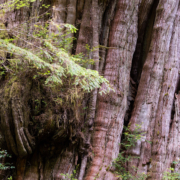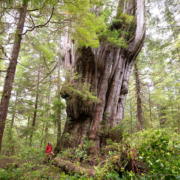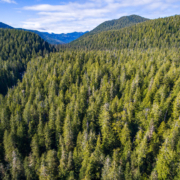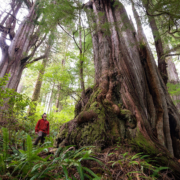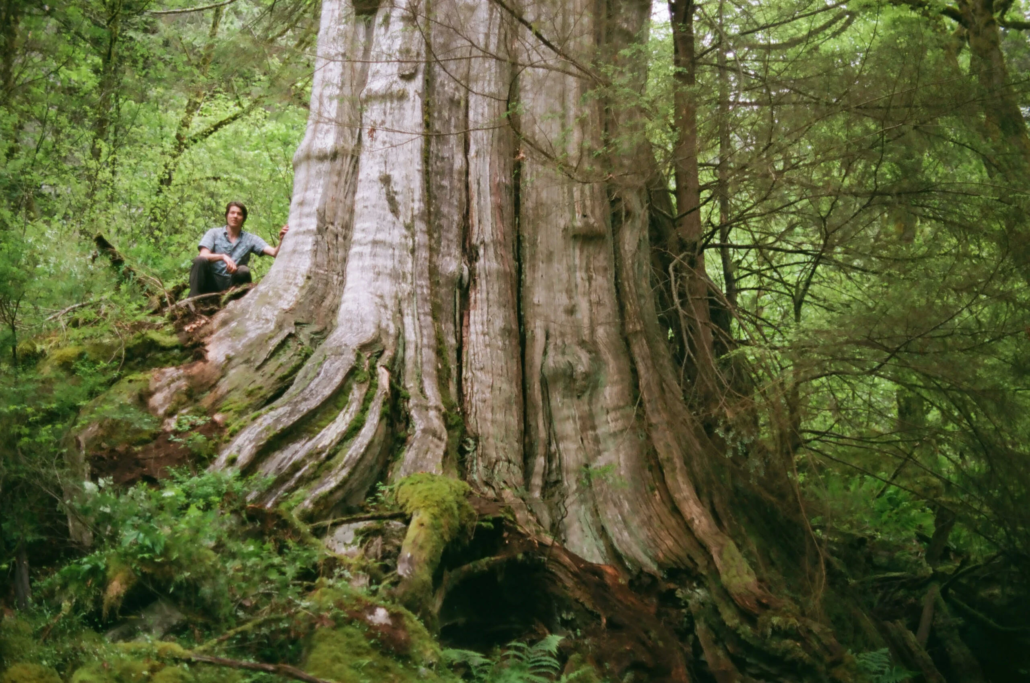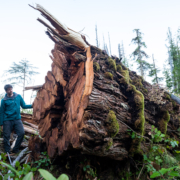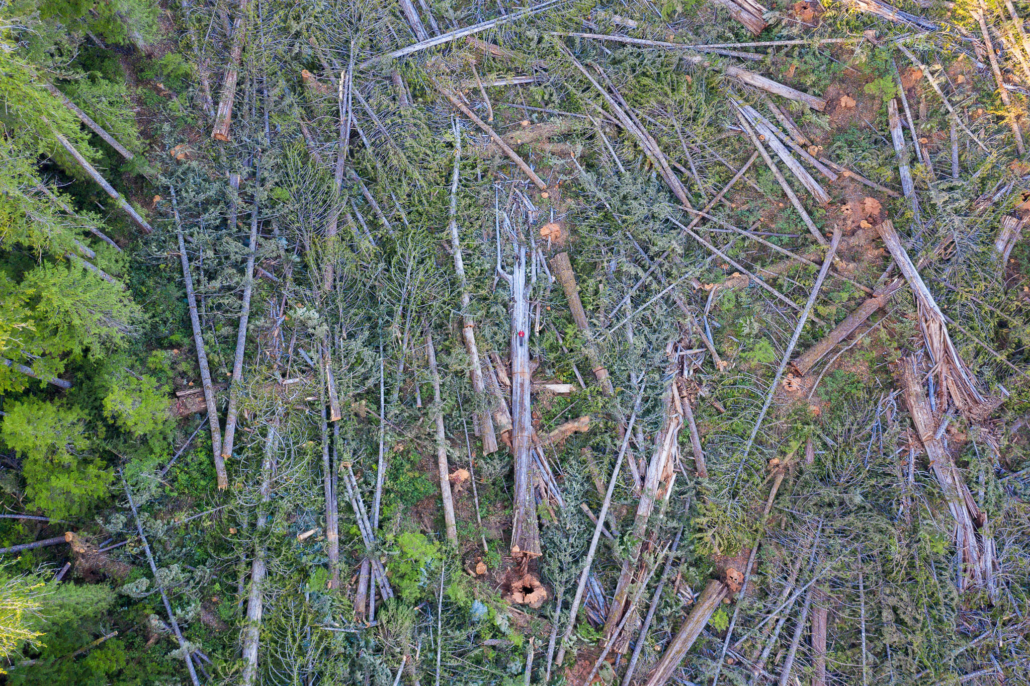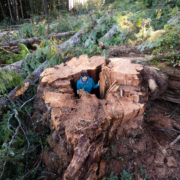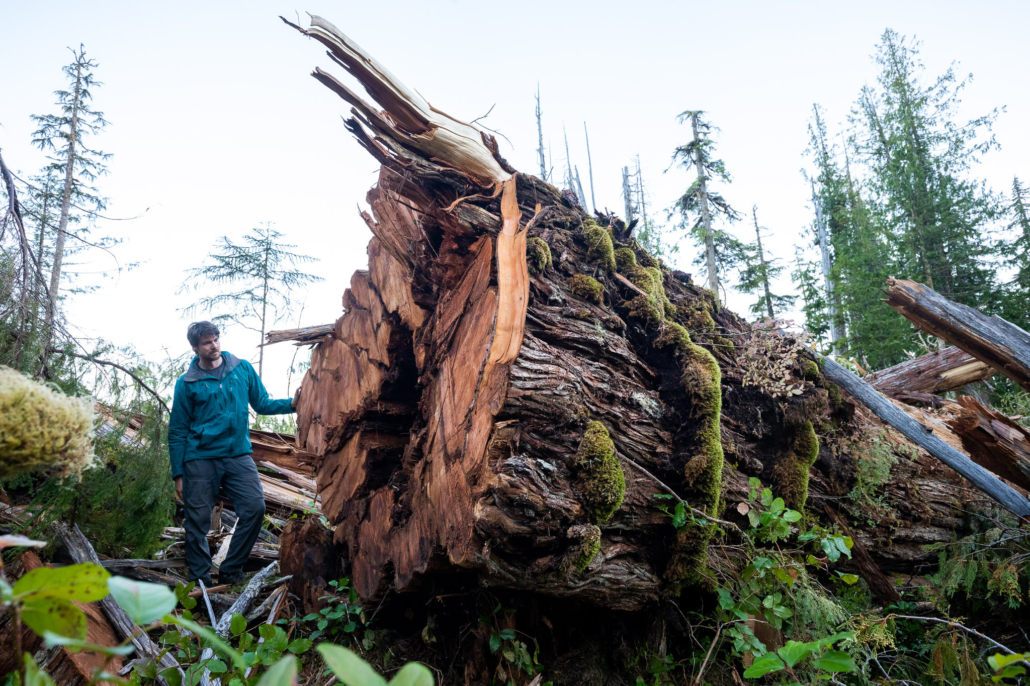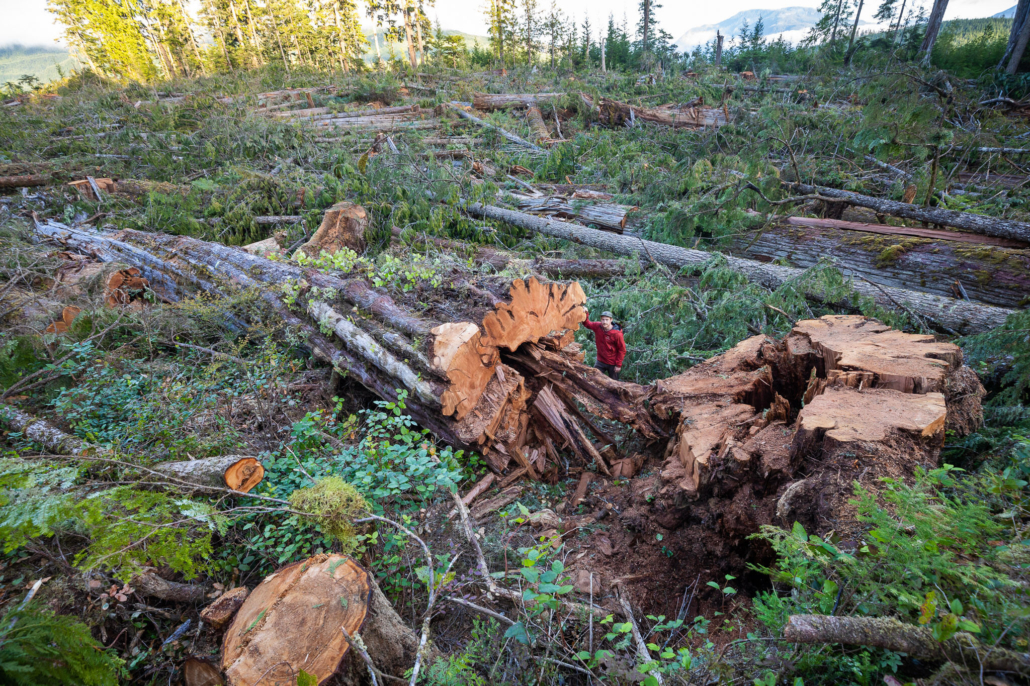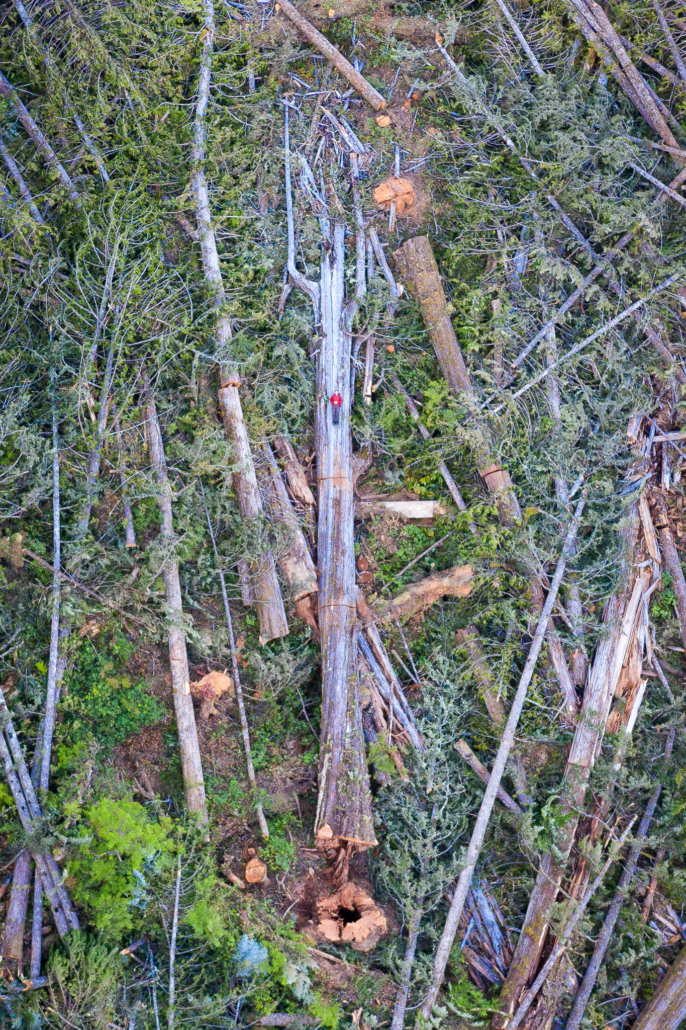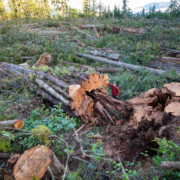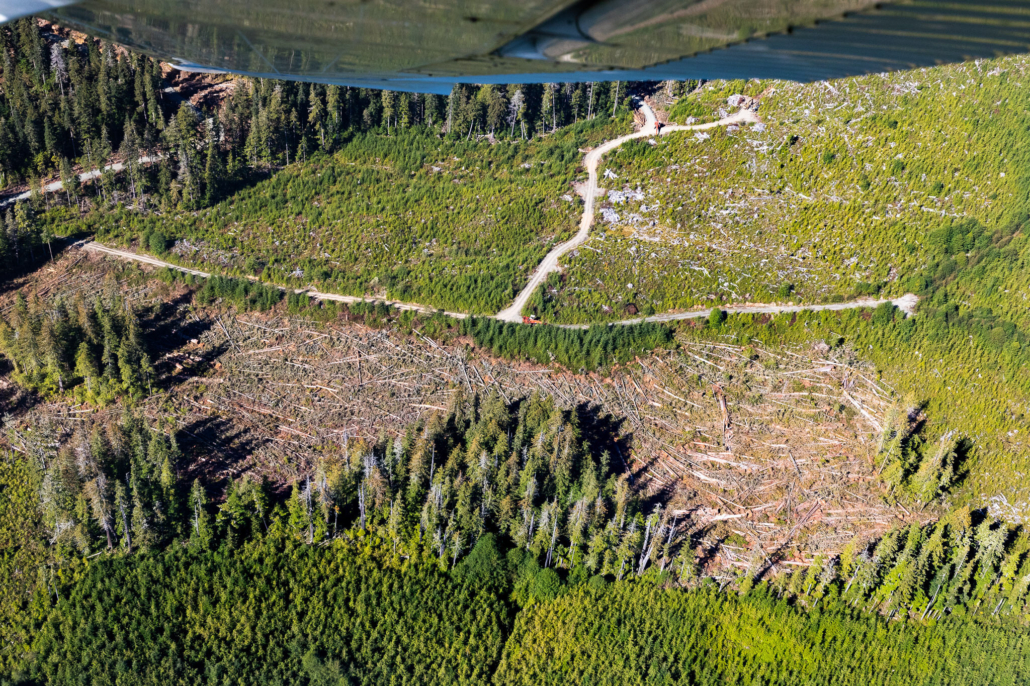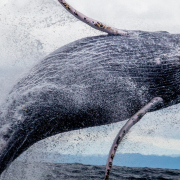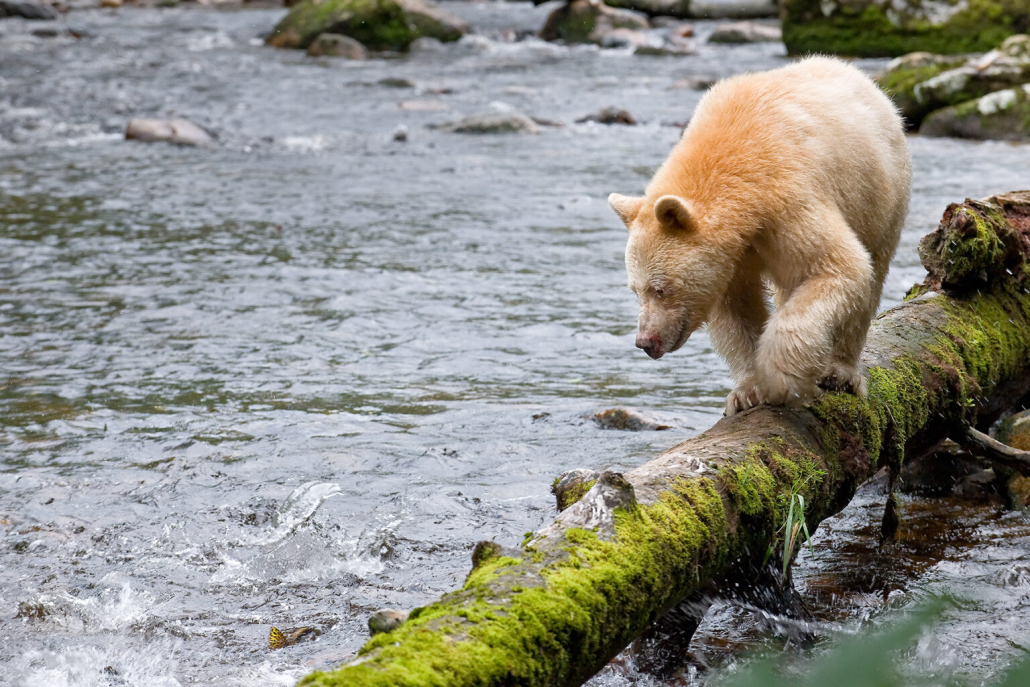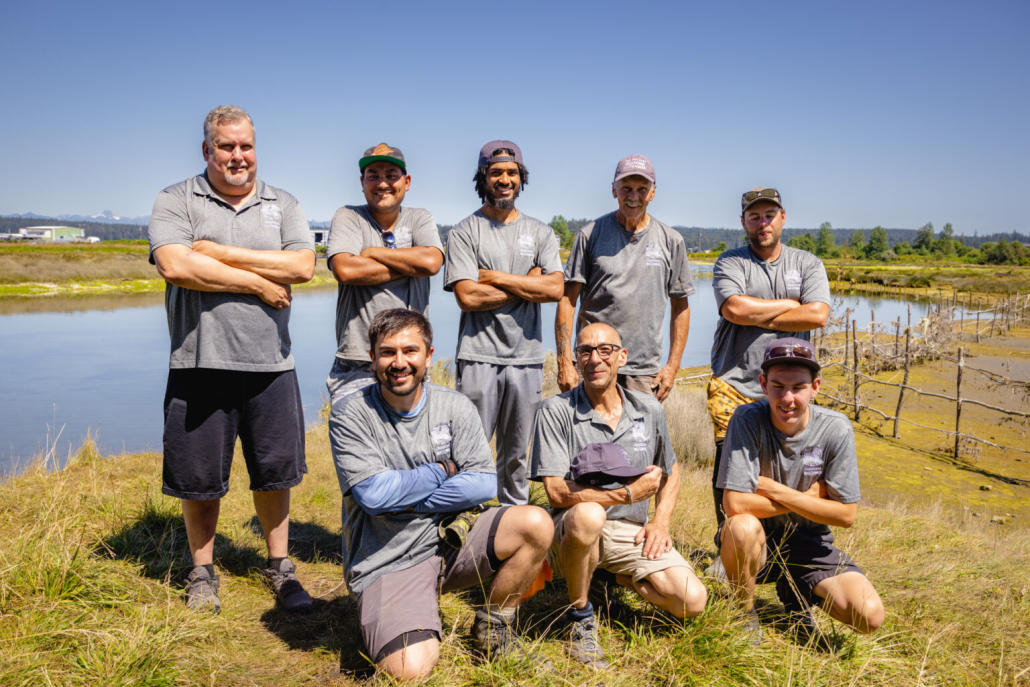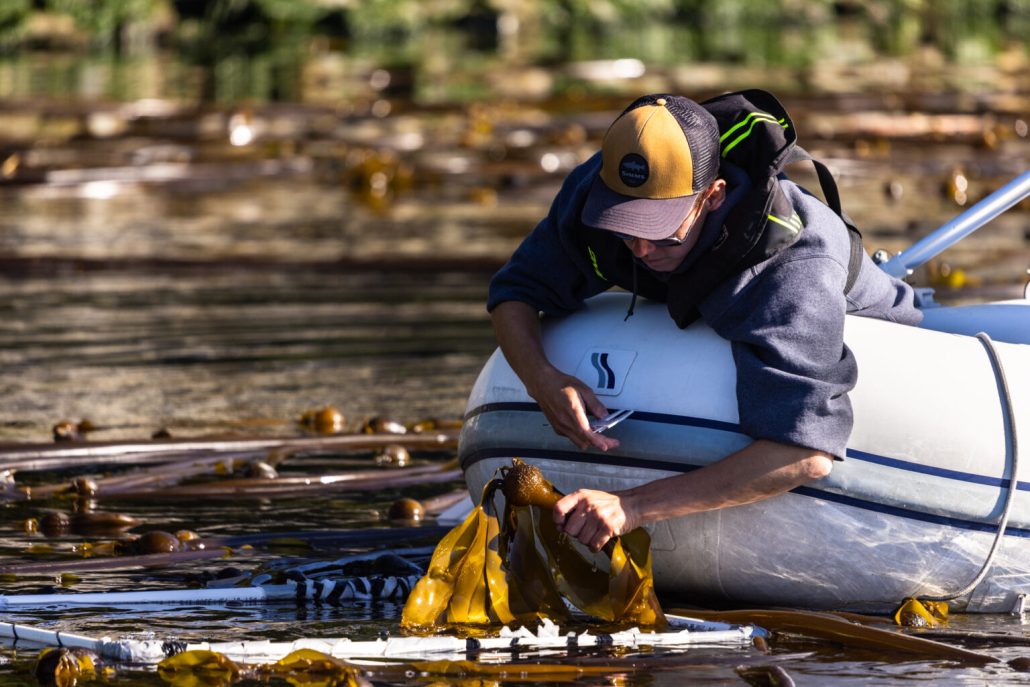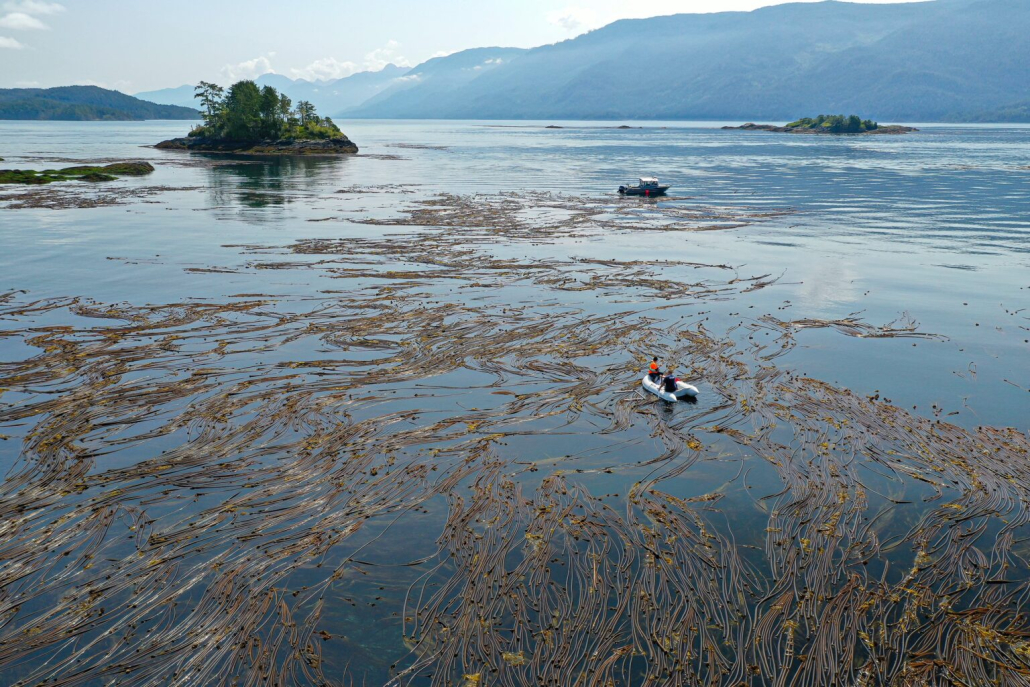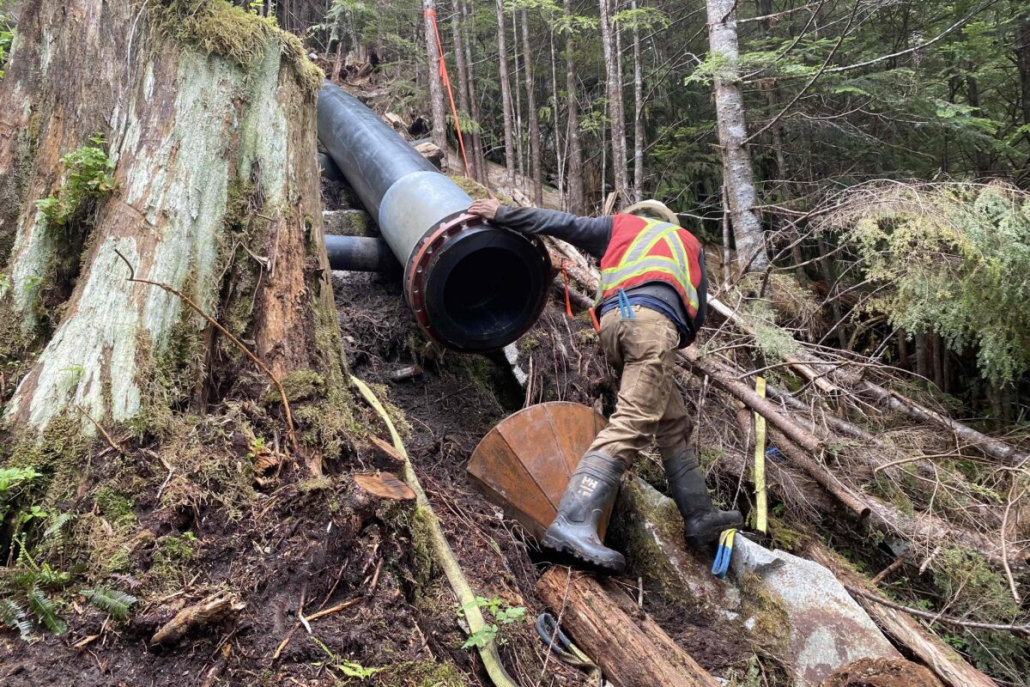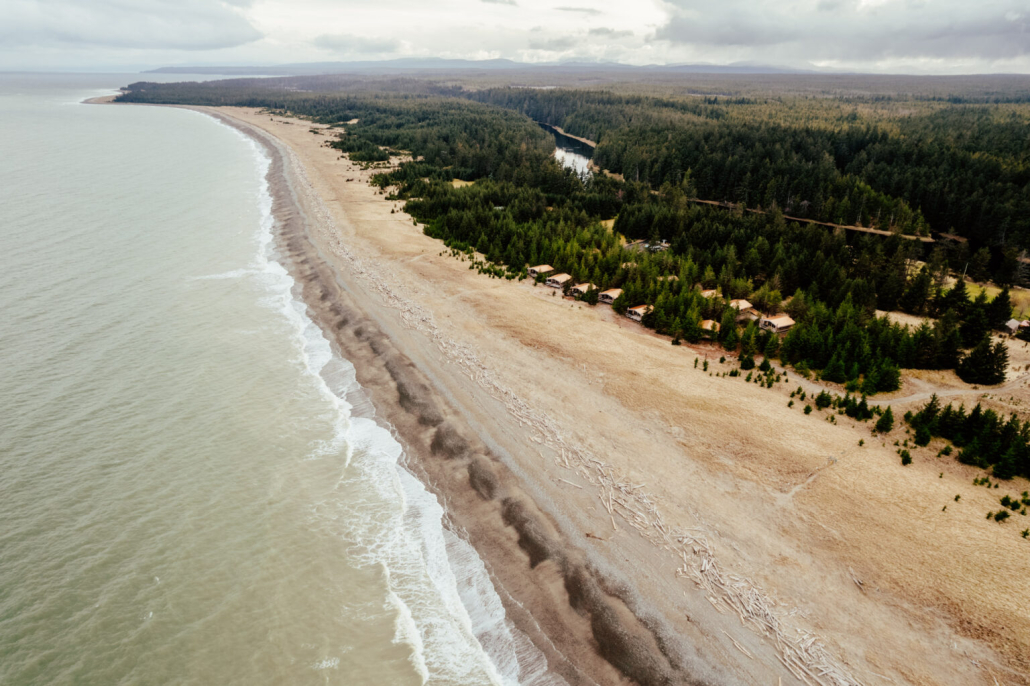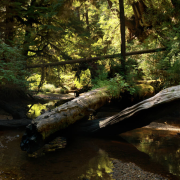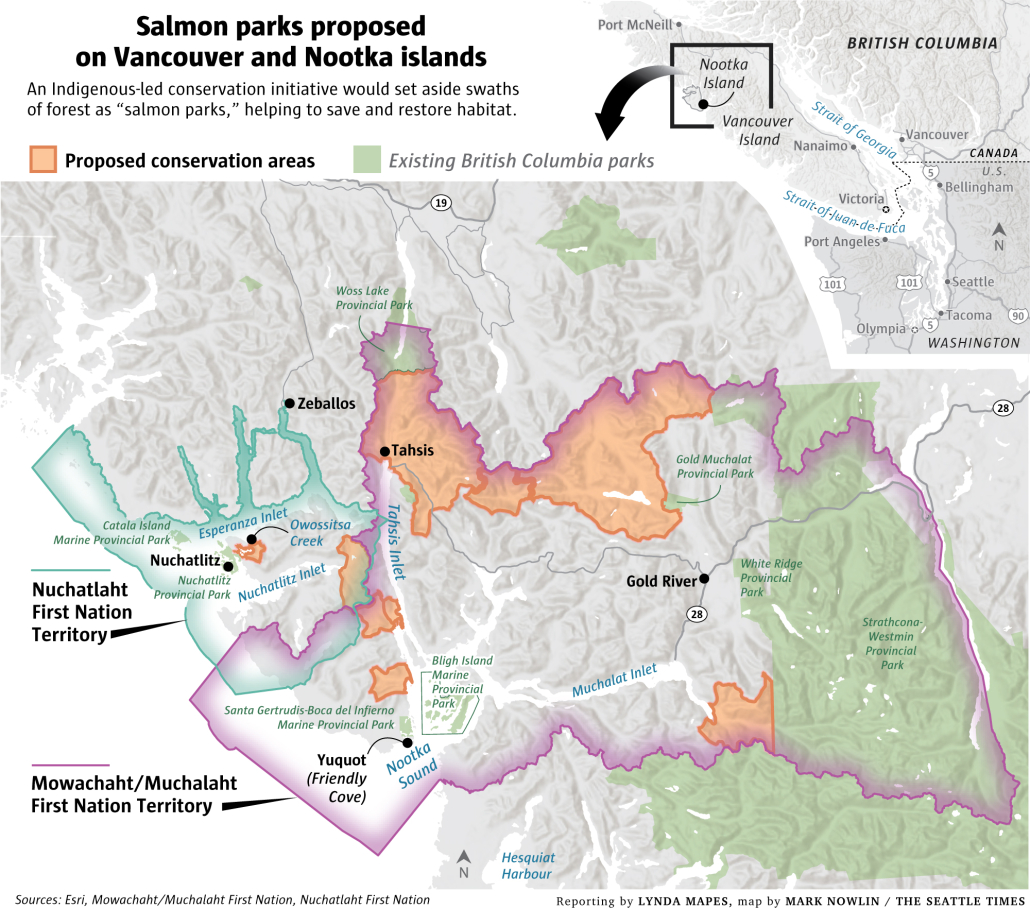Check out this interactive article by Global News, which highlights a new economic model that has allowed First Nations communities to begin transitioning away from resource-extractive industries like old-growth logging toward sustainable forms of employment and revenue, as well as providing the resources for the Indigenous-led stewardship of their unceded territories. For text-only viewing, continue reading.
April 20, 2023
Global News
By Kamyar Razavi and Daniel Nass
Have you ever seen a tree so big it would take 10 people to wrap their arms around its trunk – and that still wouldn’t be enough? A tree as tall as a downtown office building?
These trees exist and, in British Columbia’s coastal rainforests, are measured and even tracked by the people fighting to protect them.
There are powerful forces that want to log them. And with insufficient regulation, that has happened.
But there is a new frontier in the fight to save these trees. It’s an economic model that argues that leaving them standing is more profitable than cutting them down.
It’s called the ‘nature economy,’ and it relies on conservation and stewardship to promote economic growth.
One example of this new model in action is Indigenous ecotourism.
It’s a growing industry, worth nearly $2 billion pre-pandemic. Tourists visit communities to learn about Indigenous ways of life, including stewardship practices. It all depends on a healthy ecosystem.
This is the business model of the Klahoose Wilderness Resort, among many others. It’s in an isolated corner of the BC coast.
Another way a ‘nature economy’ is finding a foothold is through talent acquisition. Scott Sinclair, whose company, SES Consulting, retrofits buildings to move them off fossil fuels, says having a nature-first mindset baked into the business model attracts innovative young minds who grew up with the environment front and centre – as well as clients.
“It’s just, I think, an incredible business opportunity,” he says.
For some environmentalists as well, this work is about combining environmental action, long associated with protesters blocking roads and affixing themselves onto trees, with the idea of promoting business.
Though still niche, it’s starting to happen.
‘Valuing’ Nature
To understand the economic value of their natural assets, some communities are putting a price on them.
The District of West Vancouver is one of the first in Canada to do so.
There are some rare strands of urban, old growth trees left standing in the city’s Lighthouse Park. In a walk through the park, District officials Matthew MacKinnon and Heather Keith explained the uniqueness of the old growth forest. They told Global News how these ancient trees, some over 500 years old, maintain an extremely biodiverse ecosystem in the park, while offering people a break from the hustle and bustle of city life.
“There are trees here that have lived longer than any person that’s alive right now,” says Heather Keith, the senior manager of climate action and environment for the District.
The municipality has determined the idea has value in dollar figures. It’s one of the first places in Canada to take this approach, estimating its natural assets – forests, waterways, parks – to be in the ballpark of $3.2 billion, with forests providing up to $1.8 billion in ‘services.’
They’ve estimated that to be the cost of ‘replacing’ those assets, which provide immeasurable ecological and health benefits to the community, Keith says.
Many Indigenous communities are also charting a clear path forward toward that new nature economy.
One model that’s proven successful is called Coast Funds. It’s an investment strategy created by coastal First Nations to pool money to help local communities shift from extraction – logging old growth trees, for example – and toward protection. This means keeping those vital resources intact and leveraging them to make them profitable – ecotourism, carbon credits or guardianship programs.
“We understood that 500-year-old trees don’t just grow up overnight,” says Dallas Smith, the president of Nanwakolas Council, a group of six First Nations that’s part of the Coast Funds initiative.
The broader financial and business communities have realized that the costs of environmental inaction are far greater – and are starting to move toward a sustainable direction, too.
Adam Scott is an analyst whose group, Shift Action for Pension Wealth and Planet Health, monitors how credible Canadian pension funds are when it comes to climate action. In January, Shift released a report arguing there’s a long way to go. But at least there is a recognition that things need to change.
“The smart players in the financial industry have understood that […] the financial performance of their institutions is based on having a climate strategy,” he said.
Unfortunately, the moves are largely voluntary and without teeth, says Tom Rand, a managing partner with ArcTern Ventures. In other words, he insists, there’s a long way to go before a nature economy becomes the norm.
“If you’re asking if the broad swath of economic actors are understanding that we can make money preserving nature, absolutely not.”
But big trees are offering an inspiration for change. People name them. They trek through the forest to see them, and in the case of photographer TJ Watt, to document them before they’re gone.
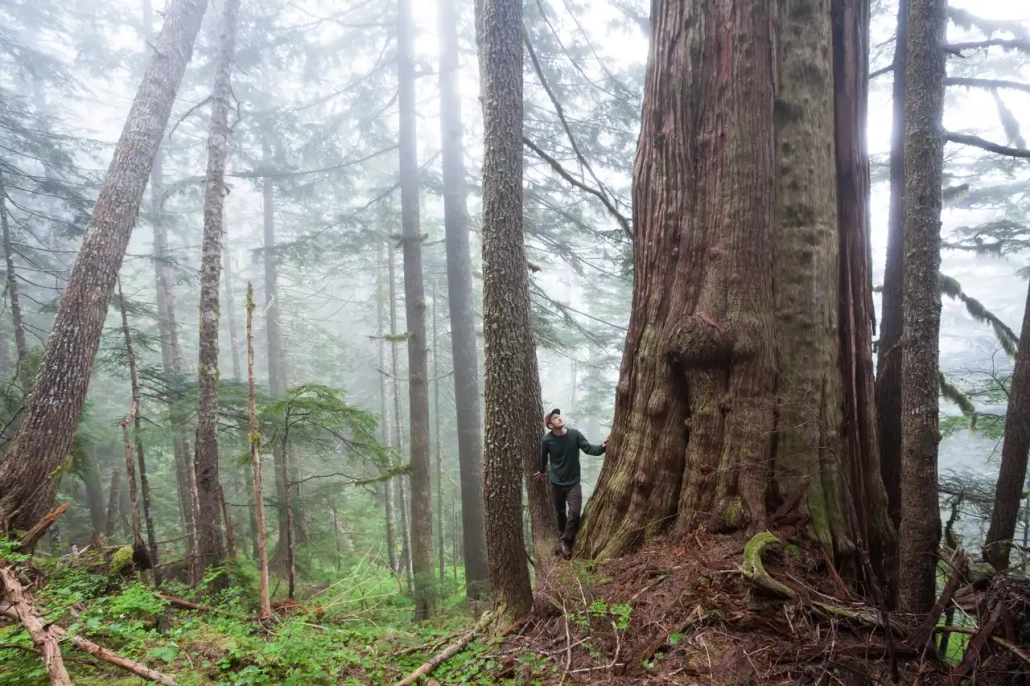
“These are some of the most enchanting and beautiful ecosystems on all of Planet Earth,” says Watt, who represents the Ancient Forest Alliance.
“They’re really some of our oldest friends.”
Tracking giants
When author and book editor Amanda Lewis set out to write a book about big trees, she thought she’d focus on the dwindling, majestic resources nestled in the coastal forests of BC.
But, solo expedition after solo expedition hiking through various groves in search of the biggest of the big led her to another, more optimistic conclusion – “I wanted to focus on what we have left” and not so much on “what we’ve lost.”
The pandemic was a catalyst for Lewis – and, it seems, for many other Canadians too.
At the forestry department of the University of British Columbia, researchers are ‘logging’ BC’s coastal giants in an online database called the BC BigTree Registry. The project documents hundreds of conifer and broadleaf trees across the province, with entries stretching back to the 1980s.
The registry is the work of a small but mighty community of big tree aficionados.
But this is by no means an exclusive group.
“Anybody can nominate a tree,” says UBC Forestry PhD student Ira Sutherland. Submissions spiked during the pandemic as people got out in nature and started noticing big trees around them.
Some of the more vivid descriptions in the BigTree registry come from Terry Nelson, a retired engineer in the Interior BC city of Fernie, and an “amateur” tree hunter.
“With its candelabra of branches spreading out in all directions, this tree seems like it should have a pride of lions hanging out with it.”
—Entry from Terry Nelson on the BC BigTree Registry
Nelson spent months trudging through the forests of the Interior to make a point: big trees aren’t just a coastal phenomenon.
“There’s a certain energy there,” Nelson says of the forest. “If I can lightly use the ‘respecting your elders’ phrase, well that’s really what it’s all about.”
Perhaps no other tree in Canada captures the debate around a new nature economy better than Big Lonely Doug. It’s a giant Douglas Fir ‘spared’ in a massive clear cut around Port Renfrew BC in 2011.
It’s become a tourist attraction of sorts, as has Port Renfrew, a community on the West Coast of Vancouver Island known as Canada’s Tall Tree capital.
“There’s a reason we call them cathedrals.”
—Harley Rustad, author of “Big Lonely Doug”
Harley Rustad, who wrote a book about Big Lonely Doug, grew up amid the ancient forests of coastal BC.
“They not only kind of look like (cathedrals), with great spires and dark corners and very quiet sounds,” he said. “But they also provoke a kind of reverence when we walk through them – you’re walking up along a path to a final altar that rises above you, stretches to the heavens.”
Longtime environmentalist Ken Wu is a big proponent of breaking out of what he calls the environmental “echo chamber,” and working with the business community to protect nature. It’s where you get “huge prosperity,” he says.
He shares photos of a secret grove he’s fighting to protect – and he’s convinced business wants that too.
The grove is dotted with moss-covered giants, branches twisting and turning into the air in scenes described as ‘charismatic,’ or straight out of a Tolkien novel.
Their ‘charisma’ isn’t just in their sheer size, but also in how rare and old they are, having withstood centuries of wind, rain, sun, fire – not to mention the advance of the chainsaw.
In an era of climate crisis – forest fires so massive they’re ‘swallowing’ some of the biggest trees, Lewis says – there’s a sense of meaning associated with that experience, and more people are seeking it out – even giving names to trees.
“I think people now are looking at trees as one of our last, best hopes.”

